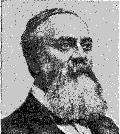Gunnar Olof Hyltén-Cavallius
| Gunnar Olof Hyltén-Cavallius | |
|---|---|
 Gunnar Olof Hyltén-Cavallius | |
| Born |
May 18, 1818 Hönetorp, Wislanda socken, Småland, Sweden |
| Died |
July 5, 1889 (aged 71) Sunnanvik, Småland |
| Alma mater | Uppsala University, MPhil 1839 |
| Notable work | Wärend och Wirdarne; ett försök i svensk ethnologi (in Swedish). Stockholm: P.A. Norstedt. 1863–64. Retrieved 2014-03-01. |
| Parent(s) |
Carl Fredrik Cavallius
Anna Elisabet Hyltenius |
| Relatives | Bp. Olof Cavallius (1648-1703) (great-grandfather's brother) |
| Notes | |
Gunnar Olof Hyltén-Cavallius (1818-1889) was a Swedish scholar of cultural history, librarian, theatre director, and diplomat.
Gunnar was the son of a clergyman from Vislanda. While he was a student at the Uppsala University,[1] he was impressed with the late currents of Gothicismus. He was an employee at the Swedish Royal Library in the period 1839-1856, the director of the Royal Theatres, 1856-1860, and the Chargé d'affaires in Empire of Brazil, 1860-1864.[1]
Gunnar was early interested in the collection of fairy tales and legends, and together with George Stephens, he published the first collection of Svenska folksagor och äfventyr in 1844-1849. His main work was Wärend och Wirdarne (1-2, 1863-1868), which was inspired both by Jacob Grimm's Deutsche Mythologie (1835) and evolutionist theories of Sven Nilsson. Wärend och Wirdarne can be seen as the foundation of Swedish ethnology.
During his last years, he lived in the parish of Skatelöv in Småland, and his collections were the foundation of the Museum of Småland in Växjö.
Sources
- 1 2 3 Hofberg, Herman; et al., eds. (1906). "Gunnar Olof Hyltén-Cavallius". Svenskt biografiskt handlexikon [Portable Swedish dictionary of biography] (in Swedish) I (2nd ed.). Stockholm: Albert Bonniers Förlag. p. 171. Retrieved 2014-03-01.
|